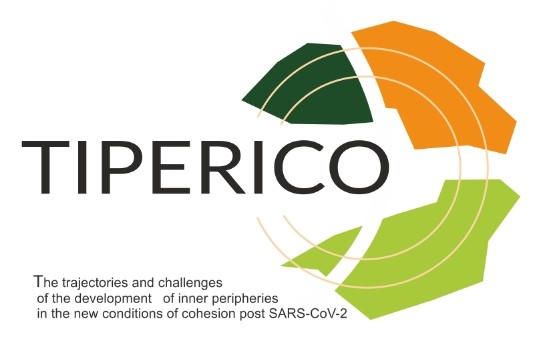The trajectories and challenges of the development of inner peripheries in the new conditions of cohesion post SARS-CoV-2
1. Scientific goal of the project
The origin, the conditions and the changes to the developmental differences between regions have been regularly discussed from the point of view of economics and economic geography. As part of these studies, effective ways of achieving spatial convergence of the social and economic development have been sought (McCann, Varga, 2015; Partridge et al, 2015; Pontarollo, Serpieri, 2018; Rodrígues-Pose, 2017, 2020; Rodrígues-Pose, Garcilazo, 2015; Thissen, Van Oort, 2010; Varga, 2017). Connecting to this discussion, this project research will revolve around permanently marginalised areas, referred to as inner peripheries in literature on the subject (Copus et al, 2017; Czapiewski, Janc, 2009; Pérez-Soba et al, 2013). Inner peripheries are common throughout Europe, irrespective of a country’s level of development. The peripheral nature of these areas is affected primarily by the limited extent of their relations with the economic environment (ESPON, 2017). The SARS-CoV-2 pandemic which started in late 2019 and early 2020 in China and has spread all over the world, has multi-faceted economic and social consequences. These consequences will be definitely more severe are far-fetched than in the previous economic shocks given to the global economy including the Great Depression (1929-1933), the 1973 oil crisis or the global financial crisis of 2007-2009 (Thorpe, Loughridge, Picton, 2020). In these conditions, social and economic consequences of the SARS-CoV-2 crisis to the local development of specific areas are of particular importance. Certainly, the aftermath is bound to change the features of specific areas’ place-based capital, the condition of public finances and the local development policy affected by it. Ultimately, it will impact the degree and nature of spatial differences in development. This will lead to verifying the topicality and effectiveness of the existing paradigm of cohesion policy; however, it may also lead to re-defining the theory of local and regional development.
The goal of the project is to identify the regularities of changes to the socio-economic development in selected inner peripheries in Poland with special emphasis placed on their sensitivity and resilience to the consequences of the SARS-CoV-2 crisis and the resulting recommendations for the changes in the directions and ways of making the development policy interventions. The main goal can be presented in a more detailed way by means of three groups of specific objectives: cognitive, methodological and application-related. The cognitive objectives include:
- systematizing the areas of inner peripheries in Poland by taking into consideration the domestic typology of developmentally delayed areas,
- defining the developmental distance of inner periphery areas in relation with more developed areas,
- defining the factors and barriers to development of selected cities and towns in affecting social and economic changes by referring to selected inner peripheries in Poland and taking into account the consequences of the shock caused by the SARS-CoV-2 crisis,
- defining the susceptibility of the specific industries and sectors to the shocks of the SARS-CoV-2 crisis, as well as by defining the existing and anticipated economic consequences in various problem areas (demography, labour market, public finances, investments, local development management),
- identifying the intensity of the spatial spread and diffusion of developmental processes between inner peripheries and cities which represent sub-regional centres of functional areas as well as factors conducive and not conducive to these processes,
- identifying the spatial range of the impact of cities on inner peripheries,
- identifying the course of developmental trajectories in selected inner peripheries in Poland with special emphasis placed on their sensitivity and resilience to the SARS-CoV-2 crisis and its social and economic consequences.
The project’s methodological goals include:
- developing the criteria of delimitation and typology of inner peripheries in Poland,
- modelling the impact of cities on the processes of social and economic development taking place in inner peripheries in Poland,
- preparing a model system of factors which facilitate monitoring of the developmental distance in inner peripheries,
- working on the assumptions and testing the system of monitoring social and economic changes in inner peripheries in Poland.
The application-related goal of the project refers to recommendations on the direction and ways of making developmental intervention (including the choice of instruments) in inner peripheries in Poland with special emphasis placed on the importance of the local cities to creating conditions for networking and diffusion of developmental processes.
The research will be carried out in two spatial arrangements. The first consists of functional urban regions of Poland’s medium-sized cities defined by means of an original methodology based on a commuting matrix. A functional urban area contains a city as well as the surrounding communes. The other spatial arrangement includes several purposefully selected functional urban regions representing various types of inner peripheries.
The timeframe of the analysis encompasses the decades of 2003-2022, with special emphasis placed on the SARS-CoV-2 crisis and its consequences (2020-2022).



